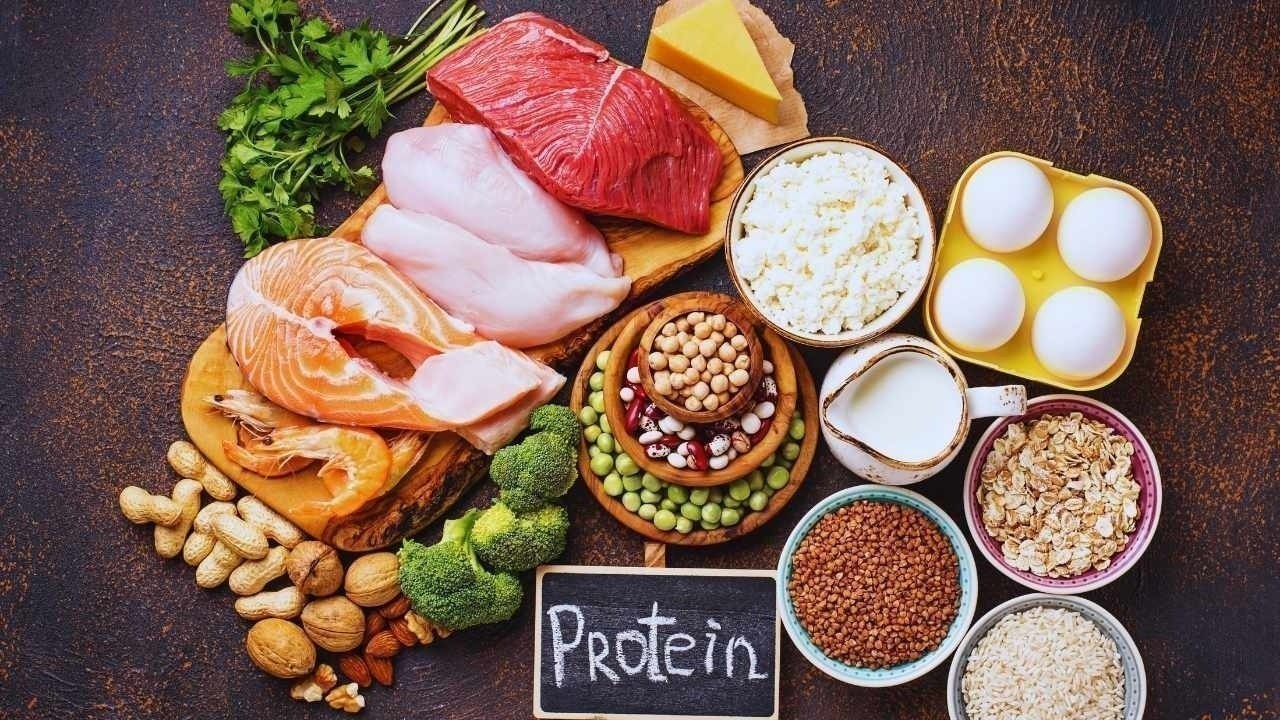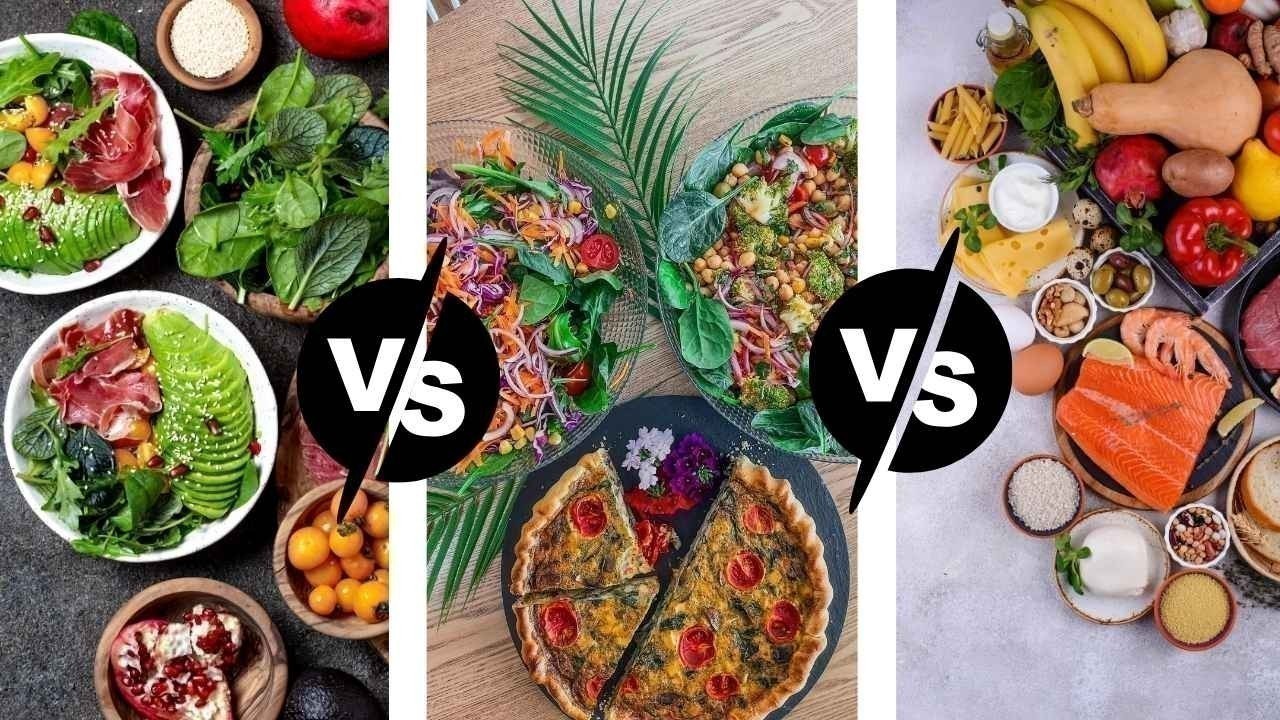
Post by : Anis Karim
When many of us think of plant‑based proteins, the usual suspects come to mind: tofu, soy milk, tempeh and perhaps pea‑protein shakes. But in 2025 the category is far broader and more dynamic. Alternative proteins are increasingly sourced from non‑soy plants, fungal or mycelium proteins, micro‑algae, insect‑derived ingredients, and precision‑fermented proteins.
Why does this matter? Because protein demand is surging globally, sustainability pressure is mounting, and consumers are more curious — and selective — than ever. The result: new formats, new sources, and new expectations.
In this article we will unpack why the shift beyond soy is accelerating, what the major alternative‑protein sources are, how they are being used in food & dining, what challenges still remain, and how you as a writer or brand can engage with this trend meaningfully.
Global food systems face a dual challenge: feeding a growing population while reducing environmental impact. Traditional animal‑protein systems are under scrutiny for land use, greenhouse gases and water footprint. Alternative proteins offer a path to re‑imagined protein systems with lower impact. Market studies estimate the global alternative‑protein sector at around USD 21.5 billion in 2025, projected to reach over USD 80 billion by 2035. Future Market Insights
Soy has long been the backbone of the plant‑protein space, but it carries several limitations: allergen concerns, land‑use implications, over‑reliance, and a sense of “been there, done that” among consumers. Brands and food developers are thus seeking diversification — different plants, fungi, algae, insects, fermentation. An industry outlook noted that while soy remains familiar, combining it with chickpeas, lentils or novel proteins offers both trust and novelty. FoodNavigator-USA.com+1
Modern consumers want more than just “plant protein.” They expect texture, flavour, clean‑label, functional benefits, and sourcing transparency. Many are flexitarians who don’t want tofu again but want an experience — something tasty, convenient, sustainable and new. A recent report indicated that 73 % of surveyed consumers say it’s healthier to get protein from a wide variety of sources beyond animal‑based. Adm
Advances in fermentation, biotechnology, mycology (fungi), insect farming and precision food systems make it feasible — for the first time at scale — to produce proteins from sources that were previously niche. These technologies unlock textures and flavors closer to meat or traditional dairy, which helps mainstream adoption. Nature
Legumes such as lentils and chickpeas are rising stars. They offer familiar flavor profiles, lower processing, and wide accessibility. For example, the “legacy & novel plant protein” line from a major food company noted chickpea among the top three awareness sources and highlighted lentils as an emerging focus. Adm
These sources allow for creative formats: lentil “meatballs”, chickpea‑based tofu substitutes, bean‑powered snacks, etc.
Fungi‑based proteins — mycoprotein derived from fungal mycelium — offer texture and protein density that mimic meat. Mycelium can form fibrous networks, delivering a chew and mouth‑feel reminiscent of meat. Wikipedia
These proteins also often include dietary fibre and may deliver functional health benefits, such as improved glycaemic response.
Algae (micro‑ or macro‑) are nutrient‑dense, grow rapidly, and require far less land than many plants. While still niche in many markets, they are gaining traction as clean‑label, sustainable protein sources. Some alt‑protein research points to algae and insect sources as important future segments. arXiv
Though less visible in mainstream Western menus, insect protein is gaining interest — particularly in snack formats. Insect protein insects such as crickets offer high protein, fibre and low environmental footprint. Consumer resistance remains, but formats are improving.
Beyond “plant” sits the category of precision‑fermented proteins and cultured meats/dairy. In precision fermentation, microorganisms produce specific proteins (like casein or whey analogues) without animals. In cultivated meat, animal cells are grown in bioreactors. These technologies remain expensive and early stage but hold huge promise. Wikipedia+1
Rather than replacing meat fully, some products use hybrid blends — part plant/fungal/insect/fermented protein plus animal or conventional protein — lowering cost, enhancing nutrition and easing transition for consumers. At a major food‑tech trade show in 2025, hybrid meat formats combining faba‑bean, rice and conventional meat were displayed. DairyReporter.com
Consumers increasingly seek convenience alongside sustainability. Ready‑meals, frozen foods, snack bars and meal‑kits using lentil, chickpea or mycelium protein are expanding. These formats reduce the barrier to adoption by replacing familiar meals rather than forcing a radical shift.
Higher‑end restaurants and foodservice venues experiment with fungal‑steak substitutes, algae‑rich dishes, insect‑based snacks or fermentation‑driven cheeses. These show the possibilities for experience‑driven dining and help normalise alternative proteins.
Snack categories — chips, crisps, protein bars — are fertile ground for novel proteins. For example, pea‑protein chips have been around, but now blends with lentil, chickpea or fungi are emerging. These often appeal to flexitarians rather than full vegans.
Alternative proteins are not limited to meat analogues. Plant‑based cheeses, milk, yoghurts using fermentation or novel bases like cashew/almond plus fungal/mycelial proteins were showcased at a recent food fair. DairyReporter.com
Different regions adopt different sources: in Asia‑Pacific, algae or insect proteins may adapt well; in India and Southeast Asia, legumes and pulses are strong bases. Producers increasingly localise sources to match availability and consumer familiarity.
One of the biggest hurdles remains achieving taste, texture and mouth‑feel that satisfy mainstream consumers. Some of the newer proteins behave differently than soy or conventional meat. Reviews highlight consumer resistance when format or taste feels “off”. Nature
Many novel proteins are subject to stringent regulatory review (especially insect, micro‑algae, cultured meat) which slows commercial rollout. Novel‑food frameworks in Europe, approval pathways in different markets create hurdles. Future Market Insights
While soy and pea‑protein production is mature and relatively low‑cost, many of the next‑gen sources (fermentation, cultivated meat, insects) remain expensive. Economies of scale and supply chain maturity are still catching up. Future Market Insights
Brand trust, ingredient transparency, and consumer education still matter. Some consumers are sceptical of “weird” proteins (insects, algae) or unfamiliar names. Familiar sources (lentils, chickpeas) may transition easier. A report noted consumers want novelty but also trust and familiarity. FoodNavigator-USA.com
Just because a product uses novel protein does not guarantee low processing, optimal nutrition or clean‑label status. Some alt proteins remain highly processed or have additives. Consumers and producers must guard against “health washing”. The Guardian
Story angles abound: “From mushrooms to mycelium: how fungal proteins are changing the plate”, “Why lentils and chickpeas are the new soy”, “Insect protein: snack of the future or weird niche?”, “The race for precision‑fermented dairy proteins”.
SEO keywords: “alternative protein sources 2025”, “mycelium protein food trend”, “insect protein snack innovation”, “lentil protein meat alternative”, “fermentation‑based protein food”.
Depth over hype: Cover both promise and challenges — sensory, cost, regulatory — to provide balanced and credible reporting.
Localise: Explore how this trend plays out in your market (India, Middle East, Southeast Asia) — pulses may be more relevant than insect protein in some regions.
Source differentiation matters: Letting consumers know “not just soy” can be a positioning advantage.
Storytelling is key: Novel sources need good narratives — sustainable footprint, ingredient origin, texture experience, cooking versatility.
Ingredient partnerships: Exploring fungus, algae, insect, fermentation partnerships may give competitive edge.
Product format matters: Easy to use formats (snacks, ready‑meals, meal‑kits) lower barrier to entry for mainstream consumers.
Transparency, clean‑label & taste: These remain non‑negotiable. Innovation without taste or clarity will struggle.
Explore incrementally: Try lentil or chickpea “meatballs”, mushroom‑based burger, algae dip, insect‑protein crunch snack.
Read labels: Novel protein doesn’t always mean ultra‑processed; check ingredient quality, sourcing and claims.
Consider function: These proteins often come with added benefits (fibre, novel nutrients, lower land/water use) but they are still part of an overall diet.
Be flexible: These formats are ideal for flexitarians — not just vegans — who want smarter protein options, sustainability and novelty.
Mainstreaming of hybrid blends: Meat/plant/fungus blends may become more common, easing transition for meat‑eaters.
Regional protein systems: In India, pulses and legumes may dominate; in Europe, fermentation/mycelium; in Asia Pacific, algae and insect proteins may gain local traction.
Retail and foodservice rollout: Expect more alt‑protein dishes in mainstream chains, and more alt‑protein formats in supermarkets at competitive prices.
Technology scaling: Cost of fermentation, culturing and insect‑based proteins may drop; supply chains improve; more entrants.
Regulatory clarity: As more regions approve novel food ingredients and cultivate meat, consumer access will increase.
Narrative shift: The story moves from “we need alternatives” to “we love alternatives” — meaning flavour, convenience and experience will dominate the conversation, not just sustainability or novelty.
Alternative proteins are no longer just about soy and tofu. In 2025, they’re about choice, innovation, experience and sustainability. Whether it’s a lentil‑based burger, a fungal steak made from mycelium, a snack powered by insect protein or a dairy analogue produced through precision fermentation — the plate is getting more interesting, more diverse and more future‑proof.
For food writers, brands, and diners alike, this is an opportune moment. The challenge and the opportunity lie in making these proteins taste great, feel familiar and deliver real value. As the category evolves, those who focus on flavour, transparency and narrative will lead.
In the end, the message is simple: plant‑based doesn’t mean pea‑only or soy‑only anymore. It means all the plants (and fungi, and insects, and microbes) — and that’s exciting.

Dubai Racing Carnival Opens at Meydan with Top Horses
Dubai Racing Carnival begins at Meydan with 73 horses in 7 races, featuring top local and internatio

UAE Warriors 65 Set for Al Ain, Features Women’s World Title Fight
UAE Warriors 65 returns to Al Ain on Nov 15, featuring 13 MMA bouts, including a women’s world title

Travel Influencer Anunay Sood Dies at 32; Peers Remember His Energy and Spirit
Travel influencer Anunay Sood dies unexpectedly at 32. Fellow creators and adventurers remember his

UAE Tops MENA in ESG Integration, Driving Sustainable Growth
UAE leads MENA in ESG adoption, with companies linking sustainability to business outcomes, employee

Chrysalis International Academy Ushers New Era in Dubai Schools
Nalapad Investments & MVK Holdings break ground on Chrysalis Academy in Dubailand, blending British

Warner Bros Discovery Q3 Revenue Misses Expectations
Warner Bros Discovery posts $9.05B Q3 revenue, falling short of estimates, driven by weak streaming

Soha Ali Khan Shares Fun & Rare Family Dinner Stories
Soha Ali Khan opens up about family dinners, her parents, and siblings, sharing rare anecdotes and i

The New Season Alert Maharani Season 4 Coming Soon
Maharani Season 4 arrives on SonyLIV with Huma Qureshi as Rani Bharti facing new rivals bold politic

Paramount+ to Stream PBR’s Top Bull Riding Series in 2025
Paramount+ secures 5-year rights for PBR's "Unleash the Beast," streaming live across 17 states from

Zohran Mamdani Victory Speech Goes Bollywood with Dhoom Machale
Zohran Mamdani wins NYC mayor race, becoming the city’s first Muslim and South Asian mayor, making h

UAE Life High Stress 3 Simple Ways Expats Can Manage Pressure
Expats in the UAE face daily pressure and burnout Learn 3 simple effective ways to manage stress fin

Smart Meal Prep in Dubai Save Money Stay Healthy
Plan smart eat fresh Discover how meal prepping in Dubai helps you save money eat healthy and enjoy

The Ultimate Guide to Dieting in Dubai Keto vs Vegan vs Mediterranean
Discover Dubai’s top diet trends Keto Vegan and Mediterranean Find which plan fits your lifestyle f

Stay Fit in Dubai 7 Fun Outdoor Workouts Without a Gym
Explore 7 fun ways to stay fit in Dubai from beach runs to desert hikes and skyline yoga No gym nee

Beyond Biryani: Mastering Portion Control in Dubai’s Melting Pot of Cuisines
Discover how to enjoy Dubai’s diverse cuisines wisely Learn simple portion control tips to stay heal